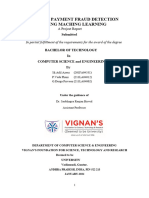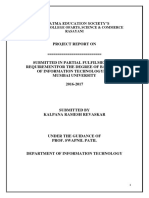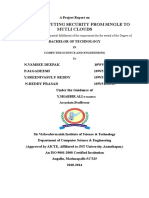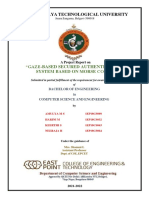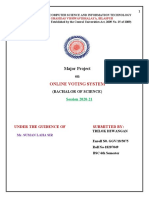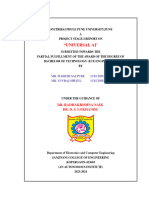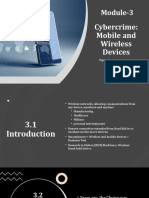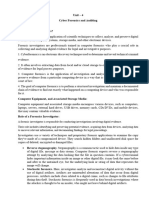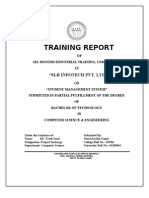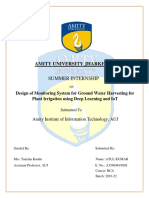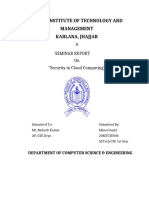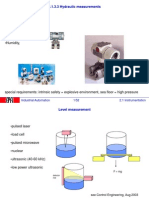0% found this document useful (0 votes)
736 views24 pagesBiometrics Final Project Report
The document discusses the use of biometrics in banking. It provides an introduction to biometrics in banking and covers topics like literature survey, scope of the project, problem statement, objectives, architecture and modules, results and discussion, and conclusion. The document aims to analyze biometrics technology in banking and its applications.
Uploaded by
swadhik2003Copyright
© © All Rights Reserved
We take content rights seriously. If you suspect this is your content, claim it here.
Available Formats
Download as PDF, TXT or read online on Scribd
0% found this document useful (0 votes)
736 views24 pagesBiometrics Final Project Report
The document discusses the use of biometrics in banking. It provides an introduction to biometrics in banking and covers topics like literature survey, scope of the project, problem statement, objectives, architecture and modules, results and discussion, and conclusion. The document aims to analyze biometrics technology in banking and its applications.
Uploaded by
swadhik2003Copyright
© © All Rights Reserved
We take content rights seriously. If you suspect this is your content, claim it here.
Available Formats
Download as PDF, TXT or read online on Scribd
/ 24


